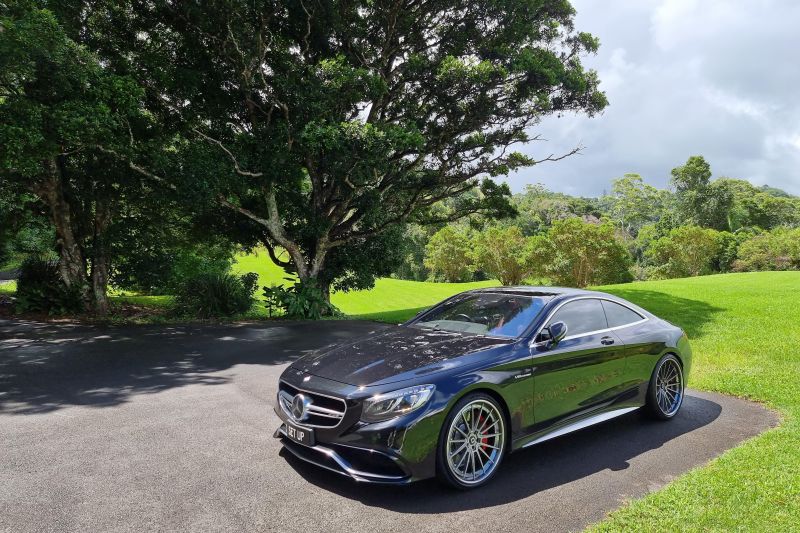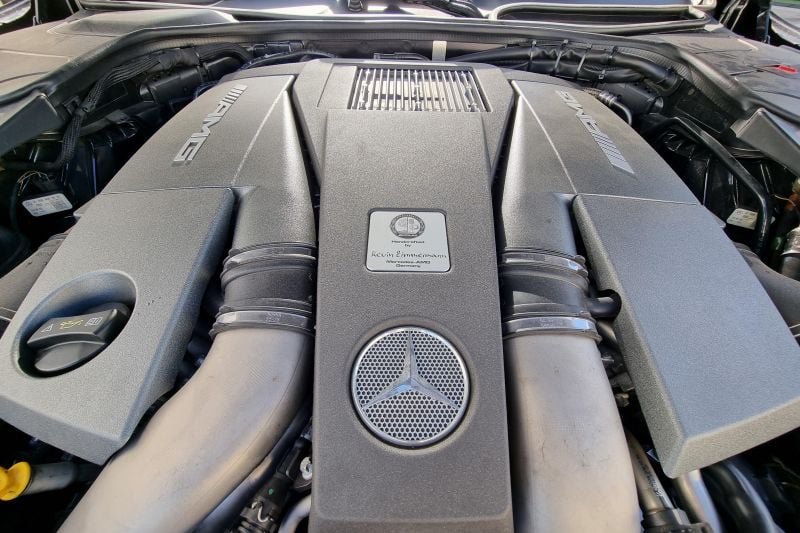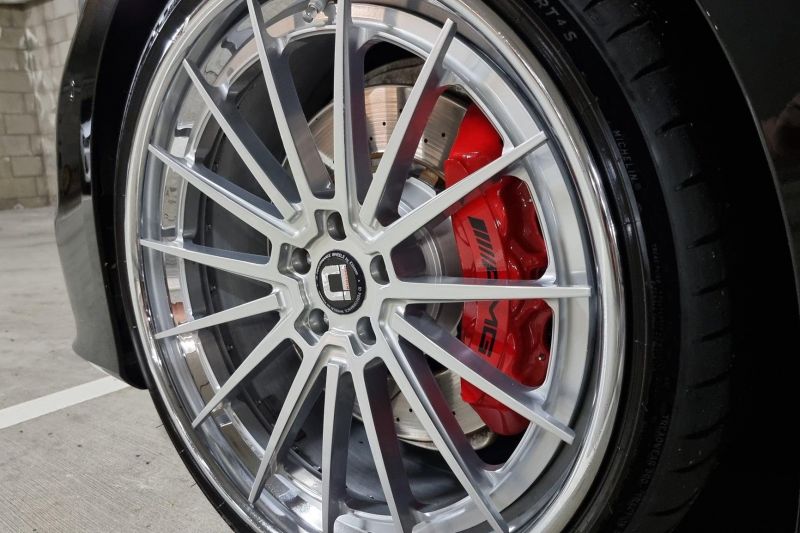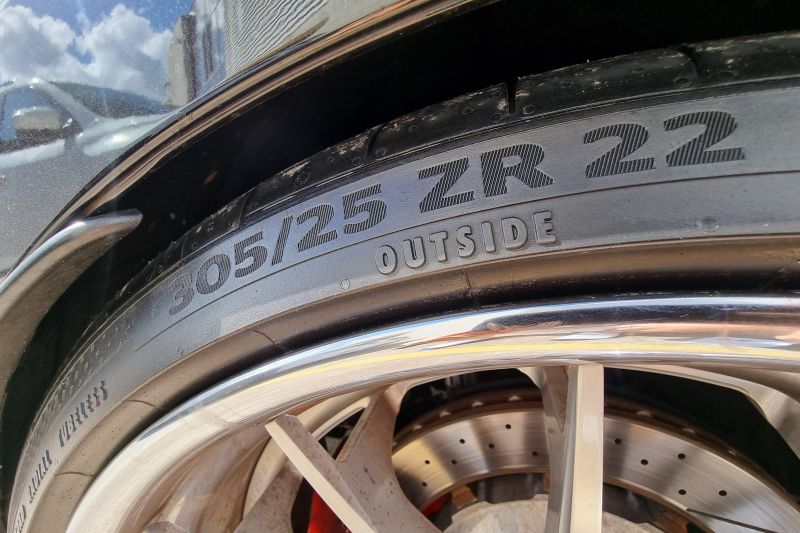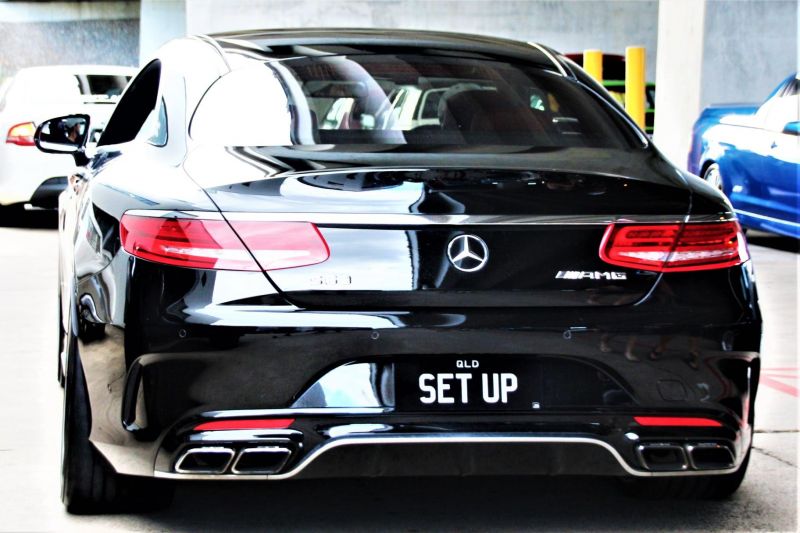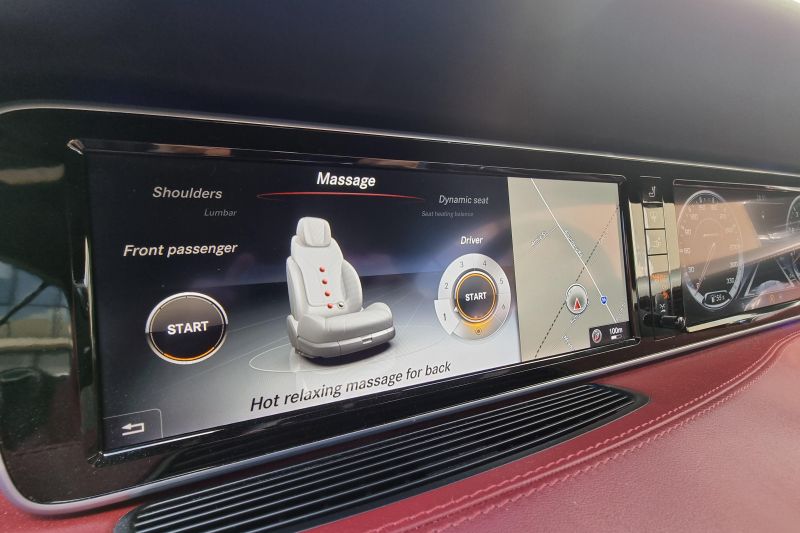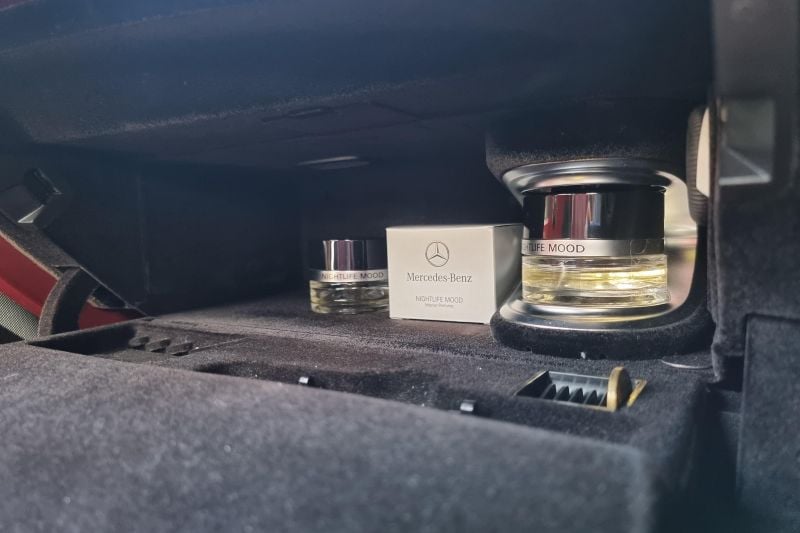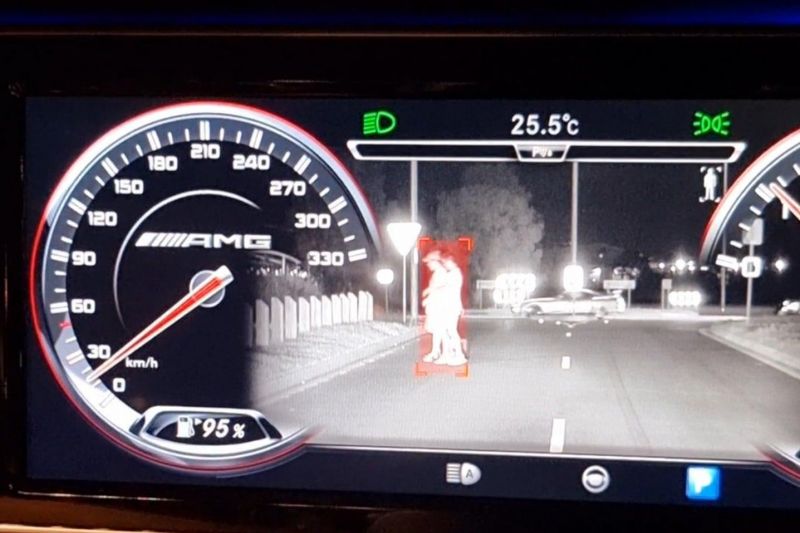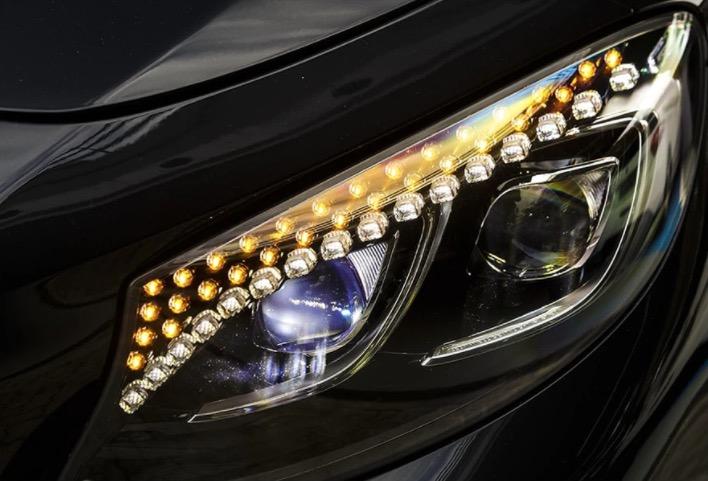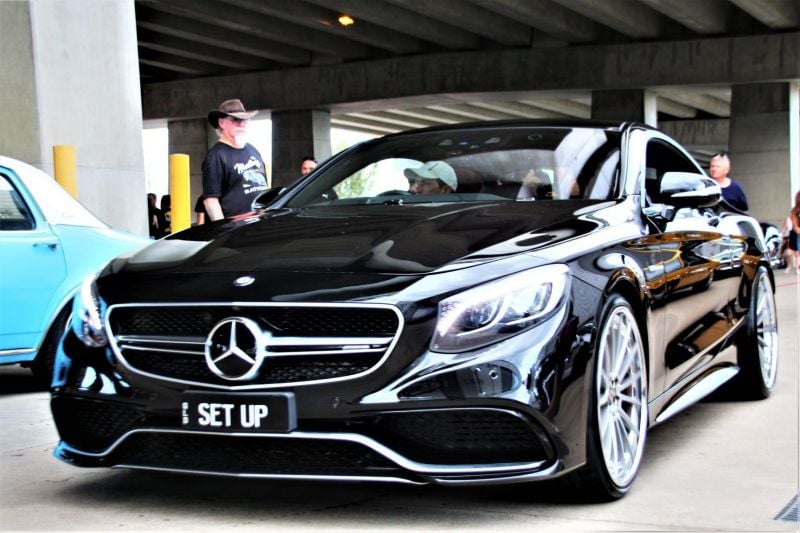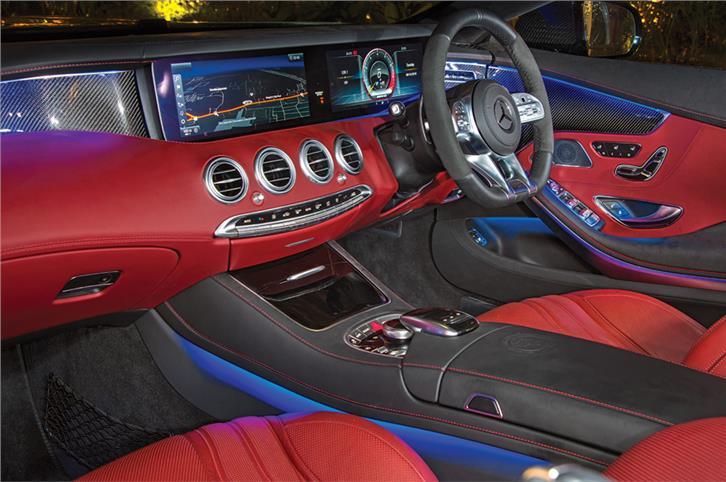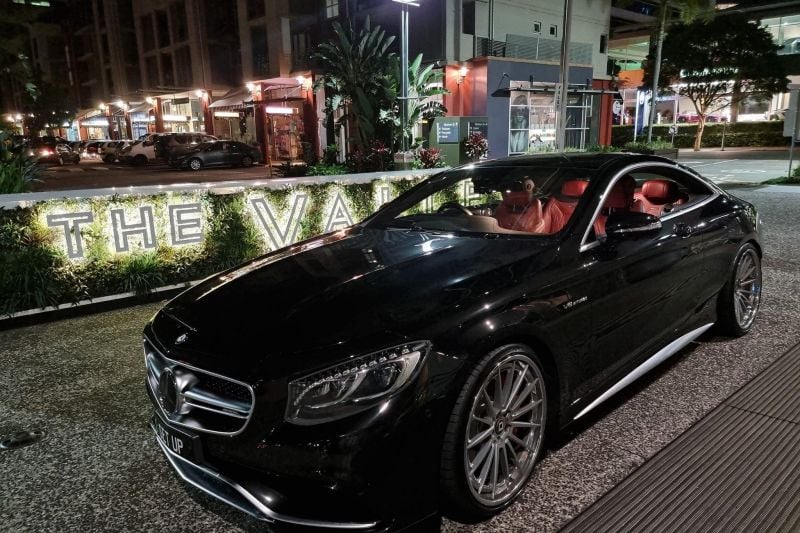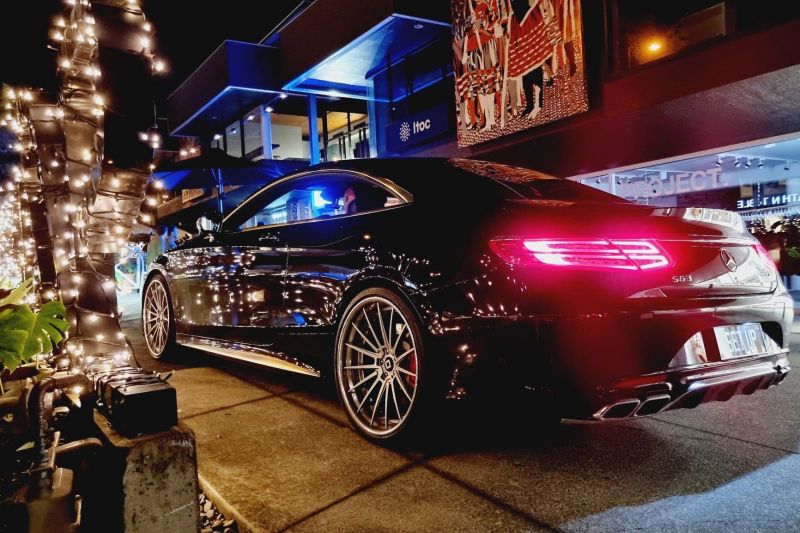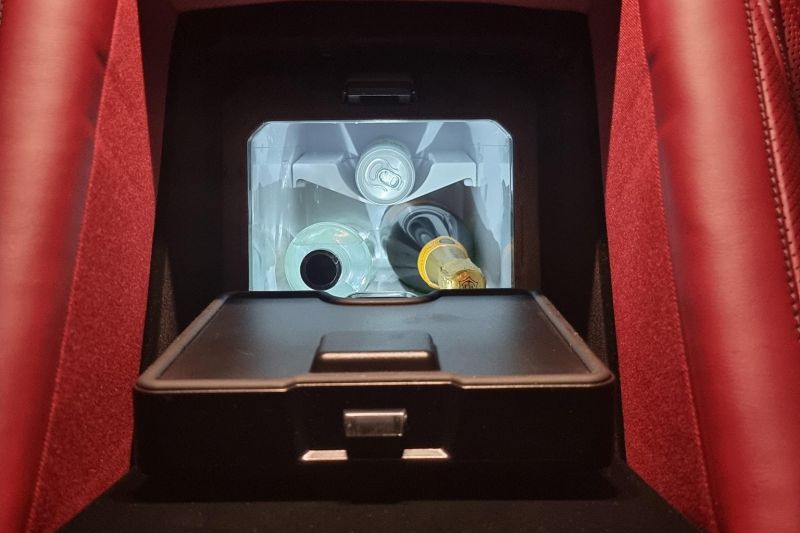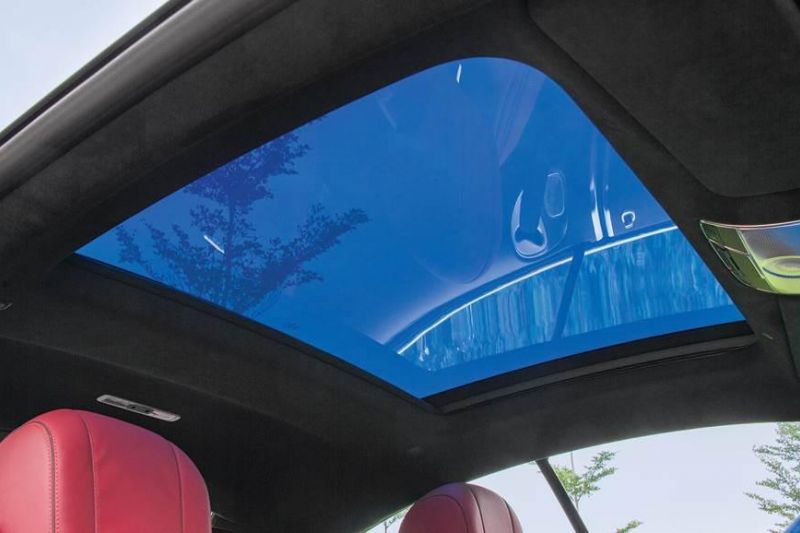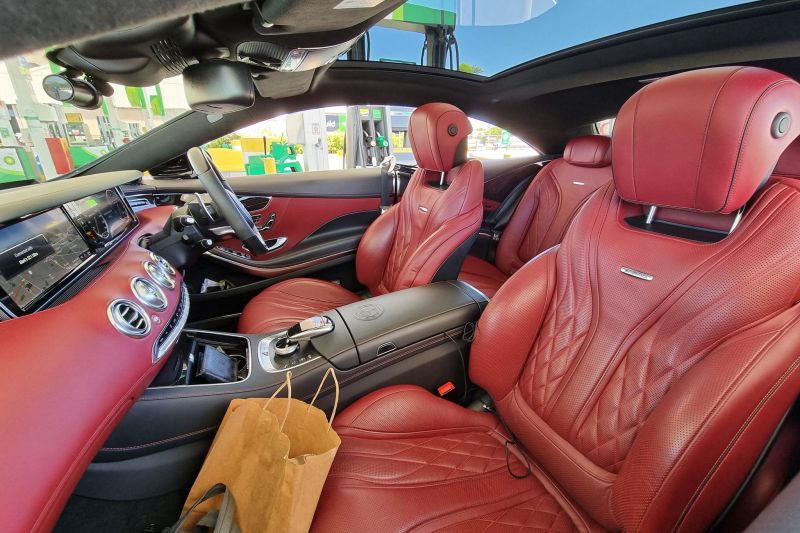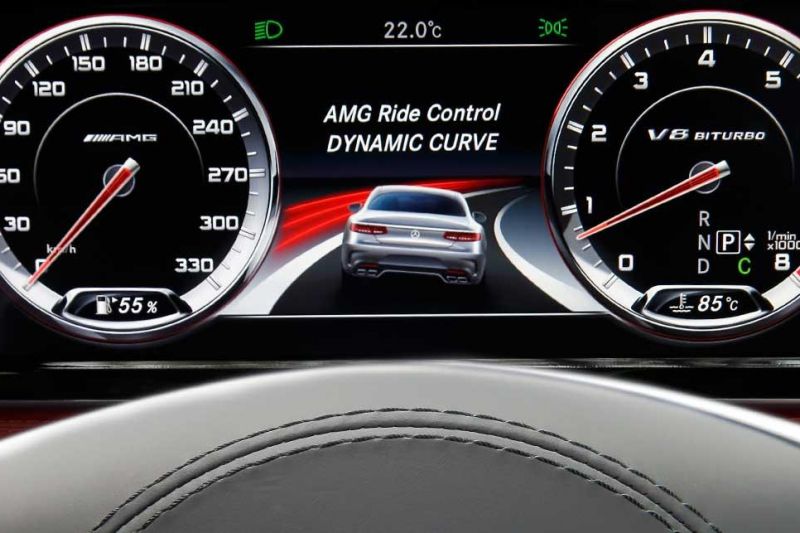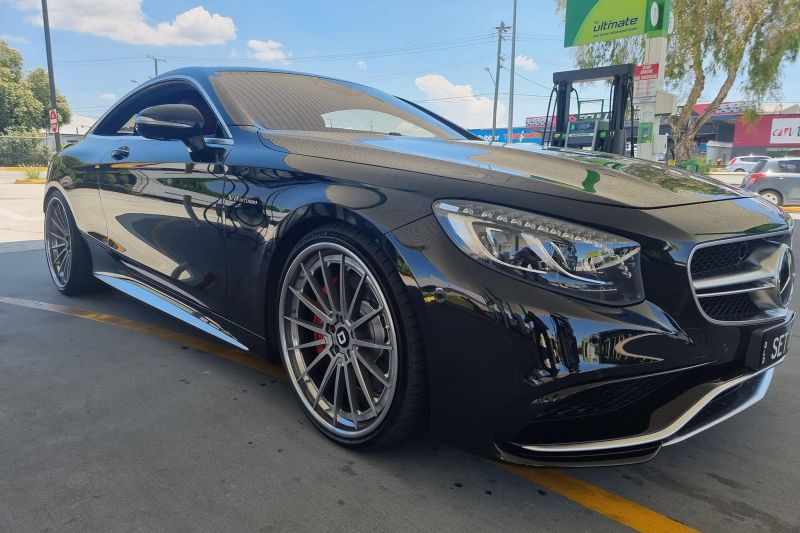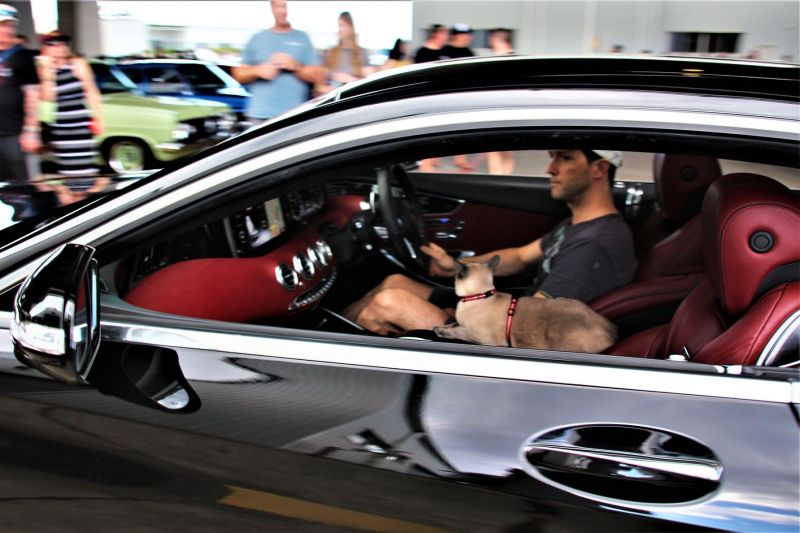About the Mercedes-AMG S63
I purchased this Mercedes-AMG S63 Coupe used for $195,000 (including all on-road costs) back in 2021. Of all the cars I have ever owned (and I have had a lot of cars), this is one that I don’t mind being stuck in traffic during long commutes. It somehow makes you more relaxed after the drive than beforehand. Comfortable and quiet when you want and brutally fast and loud when you need.
How reliable has your car been? Tell us about any issues.
Being an avid car nut, everything on wheels that I have ever purchased ends up being modified to the point that a fuel-efficient, comfortable daily driver becomes unreliable, uncomfortable and pretty much un-drivable. Not true with this AMG… for the most part.
With nearly 600hp on tap from the 5.5L bi-turbo V8, there’s enough power to not need to modify it, but leaving things standard isn’t my M.O, so I guess you could say that most of the issues I have encountered can probably be put down to my inability to leave well enough alone.
Nothing has gone wrong with the car, but here’s my experience thus far along with any issues I have come across.
From the first drive I decided it needed a bit more “character”, so I made a trip down to Elite Exhausts and Fabrications to install a pair of high flow cats on three-inch stainless steel dump pipes and employed the services of E-Tuners Brisbane to give the ECU a bit of a tweak. The resulting combination of a freer-flowing exhaust and flash-tune saw power output just shy of 520kW (700hp) and 1000Nm of torque. More than enough to get the 2.1-tonne luxo-barge up and moving.
Despite the modified exhaust, the car is whisper quiet at idle and cruise. Hit the sport button though, and it’s a different story. The valved twin system opens up and gives the classy Mercedes an uncharacteristic snarl loud enough to snap necks of even the most die-hard HSV fans.
Since this is my first AMG, I hadn’t anticipated what Mercedes-Benz considers to be ‘normal’ oil usage. The owner’s manual suggests that anywhere up to 1 litre per 1000km is acceptable. Sure enough only 3000km following my first service, the “top-up oil” message flashed up on one of the two 12.3-inch displays and it took 2.2 litres of black gold to bring the dip-stick reading to a nominal level.
No doubt this usage is probably exacerbated by the more aggressive tune and increased boost levels, but this was more than I have experienced on any other vehicle I have owned. That is, except maybe my 13B-T powered FD RX-7 that drank as much oil as it did premium unleaded.
Next on the list is the eye-watering cost of consumables. The 390mm brake rotors were nearing end-of-life fairly early given the low mileage, which is not completely unexpected considering that they are burdened with the task of slowing down the 2100kg hulk. Initially, I had planned to get them replaced at the time of the service, only to be handed a quote of nearly $8000 for a set of rotors and pads.
Needless to say, I politely declined the quote, opting instead to squeeze one last run out of the rotors, only replacing the pads at a cost of around $1200 for genuine items with sensors.
Soon after, the windscreen wipers developed a shudder and started skipping across the glass, making them ineffective and noisy. Off I went to the Mercedes parts desk for another transaction. Of course, being an S-Class they weren’t just normal wipers, why on earth would they be? These integrate sensors and fancy washer jets inside the blades that give a nice even coating of water. All of this comes at a cost, of $440 to be precise. Ouch. I suppose spraying water at the glass and using normal wipers is just too mainstream.
One thing people (myself included) often forget with low-volume, high-end luxury cars, is although the second-hand vehicle costs substantially less, the price of consumables and spare parts doesn’t change. Just a few years ago, this very car cost the first owner a supercar rivalling $420,000. Today they are selling for around half that, but the parts are still the same price as the day they rolled off the production line. This is something to keep in mind if you are ever tempted by the price of what once was a top-of-the-range, limited run, flagship car after a few years of depreciation.
Aside from a slight bump in power, the only other modifications are the lowering control module for the air suspension that drops the car around 25mm and a set of forged custom 22 by 11-inch concave wheels from the USA.
As a result of the lowered stance, to fit the 305/25 R22 Continental rubber bands inside the guards, the rear camber is set at 2.6 degrees per side, putting increased wear on the rear tyres. This went unnoticed by me since the outer edges still had loads of tread whenever I looked, and at $1000 per corner, I was hoping for the best.
Eventually, after having to inflate the tyres every few days I got under the car expecting to see a nail in the tread, only to notice the inner edges were down to the canvas. Another not-so-insignificant transaction, and I was back on the road.
All these “issues” so far are almost certainly a result of my terrible habit of modifying the car, and perhaps my brain telling my right foot to hit the gas to hear that sweet V8 note and turbo whistle through the four AMG branded tailpipes.
I have found the gear changes in sport mode sometimes jerky at low speed. Occasionally the transmission will hold gears and I’ll need to intervene with the paddles to force an up-shift. This behaviour is more noticable since the tune, so the TCU might need some tweaking to compensate for the modified power delivery.
Nearly every part of this car is computer-controlled and even unnecessary aspects are automated and electric, so it comes as no surprise that a few weird things happen from time to time.
The driver-assist functions randomly stop working, disabling cruise control, blind-spot monitors, pedestrian alerts and active steering assist.
After some fiddling around, I found this appears to be attributable to even a slightly dirty windscreen obstructing any one of the plethora of sensors lining the top of the glass near the rear vision mirror. A quick hit of the wipers and the car usually clears the error, although the system is overly sensitive and it doesn’t take much to upset it.
Finally, the auto dipping headlights don’t seem to do their job some of the time, and high beams need to be hit manually (gasp, I have to do something when I am driving this thing?!).
For a car with oh so many gadgets, this is a pretty short list, although that might be a different story in 10 years.
What do you think of the ownership experience with your car?
Simply put, I have never owned a vehicle I look forward to sitting in traffic before. Sometimes I take the long route, and find myself not bothering to dart to an empty lane at red lights, completely ignoring “pole position”. Why? Well, the radar cruise, active lane assist and automatic brake/accelerate means that if I follow the car in front, I pretty much don’t need to do anything while driving.
This semi-autonomous driving mode is impressive for a six-year-old car. Unlike BMW’s system which seems to ping-pong you from side-to-side between the lane markers even on straight roads, the Mercedes will keep you dead centre of your lane on the straights, and happily follow moderate bends. The system gives you enough confidence that you can get away with letting go of the steering wheel and taking both feet off the pedals. That is until the car detects there has been no steering input for some time and demands the driver take the wheel every minute or so. The system is more passive than you’d find in a Tesla, so you can’t expect it to steer itself around anything more than a mild sweeping bend.
One could argue that half the fun of driving is being engaged with the car and manually doing all these things, but the ‘S’ gives you the best of both worlds – a lazy daily cruiser when you just feel like dawdling home, and a rocket ship for the road with plenty of noise when you want to go for a strap.
Couple the ‘lazy driving mode’ with a relaxing hot-stone massage in seats that feature a seemingly infinite number of adjustments, and you’re more comfortable than you would be in a first-class suite on board an A380. All this while you battle the traffic to and from work in a leather-wrapped cocoon, void of nearly all but the faintest road noise thanks to the double glazed glass and probably 300+kg of sound deadening. Add your favourite track on the premium Burmester 3D surround sound system, and you can understand why the cabin is such a nice place to be.
As I noted earlier, this is the only car I’ve ever driven that leaves me feeling more refreshed at my destination than when I jumped into it.
There are so many unnecessary features, I find something new almost every day. This certainly gives an additional appreciation of just how much technology is crammed into the vehicle. Things like an ionising air freshening atomiser that cleans the air and fills the cabin with relaxing scents of your choice every 10 minutes, to the fact you can heat and cool the seats (at the same time mind you), oh and the embossed leather-bound centre console that can be opened from both the driver and passenger side using an over-engineered, overly complicated hinge that still confuses me.
One of my favourite toys is the night vision, displayed front and centre in the instrument cluster between the speedo and tachometer. This fancy gadget is my new must-have that I never knew I needed. Using a high-tech military-style thermal imaging camera and a pair of infrared headlights, the screen can display real-time mapping of the road ahead, highlighting any heat signatures that represent pedestrians and animals with a red box around them to alert you to the hazard ahead.
If the car detects the hazard is human, it will flash the high beams to warn them of your approach, but cleverly will not do this if it thinks it is an animal – presumably because animals freeze up like the saying goes, ‘a deer in headlights’. In my experience though, humans are just as clueless, so an automated horn blast would be probably more useful.
These might seem like things you’d never want or need until you’ve experienced them. Going back to a normal car is like getting booted out of business class down to economy.
There are also a few tacky additions like the Swarovski bedazzled headlights, each of which houses 47 crystals. 17 for the daytime running lamps and 37 for the turn signals. This “feature” unfortunately means the S63 coupe misses out on the intelligent LED matrix headlights which can light up the entire road ahead without annoying drivers by blanking out sections where other traffic is. I’d have much preferred that over the crystals.
Are you happy with the price and features of your car?
As with any large purchase, there was a bit of buyer’s remorse after parting with such a large sum of money, but it really does make every drive enjoyable. On the positive side, at least I wasn’t the guy that bought it brand new in ’16, tearing up $200k off the purchase price in just a few years.
Everything in the car just feels and looks perfect, all the controls are in the right place and the attention to detail is incredible. There are no signs of cost-cutting compromises when it comes to the materials or positioning of knobs and buttons. Often I have found that manufacturers skimp on things like not moving the volume controls to suit right-hand drive cars, leaving the cabin feeling somewhat clumsy. I’m looking at you, Porsche!
Inside you will find a combination of stitched red and black leather, plush carpet, gloss black ash wood trim, black suede and aluminium.
The twin widescreen displays are meticulously moulded into the stitched leather dash, rather than tacked on like a touchscreen tablet that seems to be all the rage these days. Every one of the eight, (yes eight) air conditioning vents and all of the knobs and switches are crafted from brushed solid metal which feels beautiful to the touch. There is dimmable ambient lighting around every curve, around the handles, the storage compartments and in the footwells, all of which can be set to a colour scheme that suits your mood.
The more you look around, the more you can appreciate just how much thought goes into designing an S-Class, and how far departed they are from a regular, mass-produced vehicle.
Even though my S63 is basically standard, it usually results in people giving the occasional thumbs-up at the lights, and plenty of comments when taking it out through the city on a Friday evening. It is a beautifully styled automobile that grabs attention without being overly pretentious or showy. I recall one valet driver handing me back the keys with a big smile on her face, asking “Would you call that a sports car, or a luxury car? It’s like a spaceship inside!”
Given the pillar-less design, it is one of the few cars I think looks better with the windows down, than up.
Features wise it’s next level over the top. The flagship Merc has everything I could have asked for, and plenty more that I didn’t know existed and now don’t want to be without. There are so many features that occasionally I stumble on some random function that I had not previously seen.
As an example, it took me five months to figure out that the driver can adjust the temperature and position of the passenger’s seat from the driver’s side controls. It might sound silly but it’s quite handy if you need to make room for a back seat passenger or turn the seat heater on to keep the pizza on the passenger seat warm. Not to mention I get a sick, childish satisfaction when I squash my passenger up against the dashboard and watch the confusion on their face.
Unfortunately being the pre-facelift model, it misses out on Apple Carplay and Android Auto. There is however an aftermarket solution that seamlessly integrates into the vehicle using the existing controls and infotainment screen, something which the previous owner had thankfully already installed.
One noticeably missing feature is traffic sign recognition. Considering this option was available in even lower models like the A-Class back in 2014, it is an odd omission.
What do you think of the performance and economy of your car?
Economy? What economy? With a twin-turbo 5.5L V8 engine I don’t think that word was even in the German automaker’s vocabulary when they slated this model. The very best mileage I have managed to squeeze out of it was 10.1L/100km when driving to the coast on an empty highway at 110km/h.
Average fuel economy typically hovers around 23L/100km. I have no idea how the manufacturer can claim a 12L/100km figure. After having owned this for some time, it just is not possible.
Performance on the other hand is incredible. Factory claims give the 0-100 time in around 4 seconds flat and a 12.1s quarter-mile time. With the E-Tuners tickle, this should be somewhere in the threes and a high 11 down the strip. Pretty impressive for a land-barge.
What do you think of the technology in your car?
Two words: Mind-blowing.
Big breath. We have night vision with active obstacle and pedestrian tracking, intelligent adaptive LED headlights, a champagne fridge (which I retrofitted from a European model since it was not an option in Australia for the coupe), adjustable height air suspension, hot stone massage chairs with heating and cooling function, active side bolsters that hug you during cornering, and a pair of little robot arms that hand the seat-belts to you when you close the door.
There are two 12.3-inch infotainment and instrument displays, a panoramic glass roof, touchpad data entry, heads-up display, voice control, active steering assist, radar cruise, four-zone climate control, active automatic parking assist, soft-close doors, gesture-controlled boot activation, 360-degree surround cameras, blind-spot monitoring, and automatic collision avoidance.
Still with me? You get a cabin ionisation air filter, cabin fragrance atomiser, adjustable colour ambient lighting, and let’s not forget the brilliant Burmester 3D sound system that somehow uses 25 speakers with 1600W of amplification.
Is that enough technology? I have no doubt forgotten a bunch of things, but I don’t have a month to read the features in the 1000 page owner’s manual.
What do you think of the ride comfort and handling of your car?
One of the coolest technological marvels is the suspension. The S63 Coupe has what Mercedes-Benz dubs “Magic Body Control”. Stupid name, but very cool tech.
This uses stereo cameras mounted above the rear vision mirror and sensors that scan the road ahead to predict the road surface and evaluate imperfections. The computer in the car adjusts the suspension of the vehicle to compensate for each bump and dip. The result? An uncannily smooth ride.
This feature means you essentially don’t need to slow down for speed humps, which are somehow smoother at 30km/h than 10km/h. Get your head around that!
This same “Magic” technology can utilise the air suspension to lean into corners by raising one side and lowering the other, making the occupants feel like they’re not cornering at all. It’s quite surreal to experience.
Considering the S63 is bulky, it is surprisingly nimble around the bends. When in sport mode, the suspension firms-up giving enough grip and corner speed to exceed any normal driver’s comfort levels in the twisties.
To put the dimensions into perspective, the coupe is 77mm longer than a LandCruiser LC200, and almost as wide. This is hard to get your head around, especially considering how little leg room the rear occupants get. Amazingly though, it doesn’t feel anywhere near that big whilst navigating through traffic and parking lots.
Do you have any additional comments about your car?
Unless I had a few million to spare, I can’t see myself paying retail price on the S63 (over $400k), but at half that for a car that’s only a few years old, and packed with tech that most cars probably won’t have in the next 10 years, it’s a decent buy if you have the budget.
As with any extreme high-end luxury car, depreciation is a real concern, especially once the kilometres approach six figures. I will most likely begrudgingly move it on once it gets close to the psychological 100,000km barrier.
The main drawback would have to be the fuel economy, especially being the pre-facelift 5.5L that was phased out in favour of the more efficient direct-injection 4.0L bi-turbo engine as seen in newer AMG V8 models.
All said and done, I have never owned or even driven a car that comes close to ticking as many boxes as the S-Class. Truly an incredibly engineered vehicle full of features I didn’t know I wanted. Having experienced such a vehicle, the bar for my next daily driver certainly has been raised.
